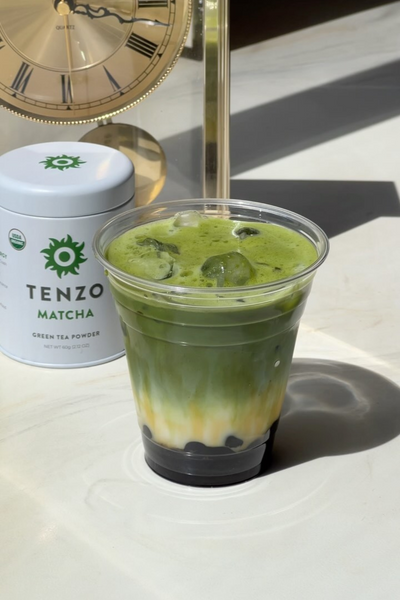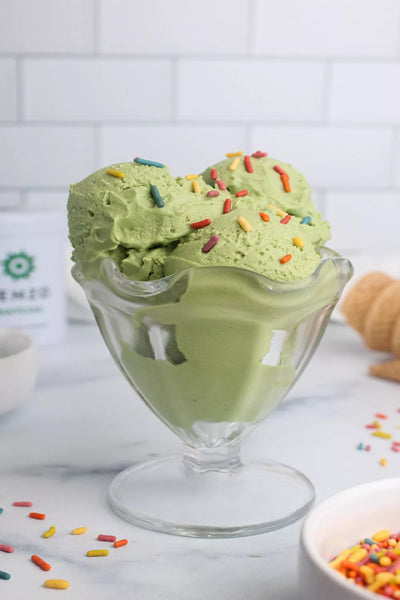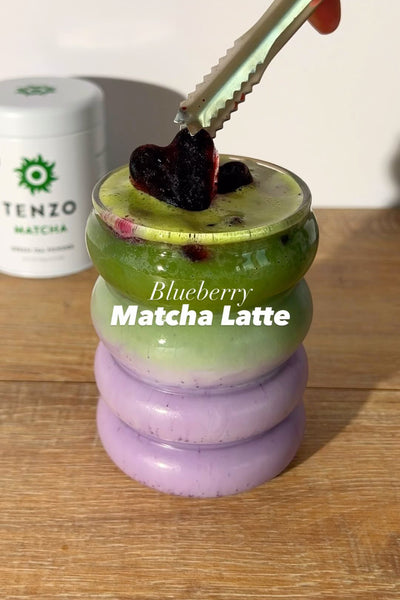What Is Bubble Tea? How to Make, Different Types, and More

Bubble tea may look strange to the uninitiated. What is this pastel-colored liquid, and what are those round brown things at the bottom of the cup? Why is the straw so big? Does anyone know what’s really going on here?
Bubble tea, also known as boba or milk pearl tea, made its way to the United States from Taiwan, is a casual and common drink. Bubble tea is a fun treat that can be made in endless flavor combinations. If you’re wondering what all the fuss is about, why not whip some up?
What Is Bubble Tea?
Bubble tea usually consists of black tea, but it can also be made with green tea. Add milk, ice, and the “bubbles.” The bubbles in bubble tea are actually large pearls of tapioca. The straw is wide enough to accommodate these pearls, with the idea being that you’ll eat them.
Tapioca pearls are made from the starches in the root of the cassava plant. You might remember them from tapioca pudding when you were little. Their form looks so different in bubble tea because they’ve been boiled and left to soak in caramelized sugar, lending them their brownish hue and causing them to swell exponentially larger.
Bubble tea can be sweetened and flavored in technically limitless ways. In many respects, it’s just as versatile as a latte or a milkshake. The only limits are your imagination.
The History of Bubble Tea
Tapioca was introduced to Taiwan from Brazil around the early 1900’s. The population took an immediate liking to tapioca’s unique taste and texture. Taiwan has a unique obsession with the chewy, springy, bouncy texture of tapioca and foods like tapioca. The natives even have a special name for it. They call it “Q” - that’s it, just Q. And they attempt to incorporate that texture into as many dishes as possible. Boba gave them an opportunity to introduce Q to beverages.
For almost a century, tapioca balls were used to add Q texture to desserts. They finally landed in bubble tea in the late 1980s. At the time, milk tea was a popular beverage, comparable to America’s relationship with coffee lattes. Lin Hsiu Hui, a manager for Chun Shui Tang tea shop in Taichung, Taiwan, started putting tapioca pearls in her milk tea. She didn’t know it at the time, but she started a trend that would gain massive popularity around the world.
In most places, bubble tea is called boba. It’s named for Amy Yip, a Hong Kong sex symbol and actress who rose to the height of her popularity around the same time boba did. Amy Yip’s nickname was also boba, which just so happens to be a Chinese slang term for breasts. It’s their language’s equivalent of “boobies.” Yes, you’ve been asking tea shop owners to provide you with boobie tea. No, they haven’t found your request to be odd.
The Different Types of Bubble Tea
There are technically an unlimited amount of boba tea flavors, but most of them fall under the same few categories.
Classic Boba Tea
Classic boba tea is simple. It’s just milk, black tea, tapioca pearls, and some kind of sweetener. Ultimately, it isn’t much different from an iced latte made with tea instead of coffee, but for the addition of the boba at the bottom of the cup.
Green Boba Tea
Green boba tea is the same as classic boba tea, but it's usually made with matcha. Matcha’s stronger flavor and bright green color make for a beautiful cup of tea packed with antioxidants.
Fruit Boba Tea
Fruit flavored boba tea often contains real pieces of fruit, sitting at the bottom with the tapioca pearls. Honeydew, mango, and lychee are the three most popular authentic fruit flavors for boba tea.
Brown Sugar Boba Tea
Brown sugar boba tea is the east’s equivalent of a vanilla latte. It’s a sweet, ubiquitous staple and a great way to change up a classic boba tea without modifying it into something unrecognizable. Brown sugar lends the tea a more complex, richer flavor that makes it a bit more decadent to drink.
Taro Boba Tea
Taro is a root vegetable that grows like a sweet potato but tastes like a coconut. It ranges in hues from stark white to deep purple. Taro puree is used to sweeten boba tea while lending a creamier texture, making a boba drink similar to a coffee frappe in mouthfeel and consistency. Despite its decadent texture, taro is high in fiber, vitamins, and trace minerals that give boba tea a healthy boost.
Dessert Boba Tea
Dessert boba tea gets a little wild. They sometimes feature custard, pudding, sweet potatoes, red bean paste, panna cotta, and other thick or rich ingredients. The end result is a boba that may be easier to eat than to drink. Boba tea this decadent is perhaps best reserved for very special occasions. People who are trying to be mindful of what they eat or drink will find that loaded boba teas don’t have a place in their regular diets.
How to Make Bubble Tea
The base recipe for bubble tea is very simple. You can purchase tapioca pearls from most Asian grocery stores. Boil them until they plump up, which should only take about 5 minutes. You can turn off the heat and allow the remainder of the pearls to sit in their water and even refrigerate them that way. Use a slotted kitchen spoon to strain off the pearls you want to use in your tea.
Then, brew a strong cup of black tea and allow it to cool. You don’t want to put hot tea in a cold drink. The temperatures will compete, bringing your bubble tea to room temperature before you’ve had a chance to enjoy it.
You can sweeten your black tea with any sweetener you’d like. You can use sugar, but alternatives like honey, maple syrup, and agave nectar will work just as well. Sweeten to your desired preference.
Pour the tea over the tapioca pearls and add your milk. You can use dairy milk if you usually prefer dairy milk, but plant-based milk works just as well. Unsweetened vanilla almond milk can lend a delicate flavor to your bubble tea.
Remember that you’re going to need that special large-diameter straw in order to be able to enjoy your boba tea the way it’s meant to be enjoyed. The tapioca pearls are a part of the drink, and they aren’t going to find through your standard reusable stainless steel straw.
Bubble Tea With Matcha
Matcha is the second most popular tea used to make bubble tea. Start by making matcha iced tea. Combine 3 teaspoons of matcha with four ounces of room temperature water in a shaker bottle, and shake to combine. Once the matcha is blended, top it off with cold water and add some ice. You can pour this mixture over your tapioca pearls and top it off with milk or plant-based milk.
Why Should I Use Matcha in My Bubble Tea?
Matcha has a strong flavor that mingles well with creamy plant milks and tapioca pearls. Matcha is naturally sweet, but if you prefer something a little sweeter, it pairs well with honey. Even though matcha bubble tea is very yummy, its flavor profile is not the most enticing reason to use matcha instead of black tea.
Matcha offers more antioxidants and wellness benefits than traditional black tea. Matcha tea is made from the whole leaf, which you ingest instead of steeping. You get every single antioxidant the leaf has to offer, as well as a calming dose of amino acid L-Theanine to prevent a caffeine crash.
The Takeaway
Next time you make bubble tea at home, consider making it with matcha. The benefits of matcha make bubble tea a special treat that caters to your overall wellness. By making bubble tea with unsweetened plant-based milk and a small touch of honey, you’re lightening up the recipe, reducing the sugar, and packing your boba with beneficial antioxidants.
Tenzo’s Trial Kit contains everything you need to make matcha at home. It’s delicious, beneficial, and simple to prepare. Matcha can be used just like any other tea or coffee, and it provides you with so much more than just a caffeine boost.
Sources:
What Is Tapioca and What Is It Good For? | Healthline
In Italy, ‘Al Dente’ Is Prized. In Taiwan, It’s All About Food That’s ‘Q.’ | NY Times
Chun Shui Tang Tea House: My Journey to Where Bubble Tea Began | The Daily Beast










